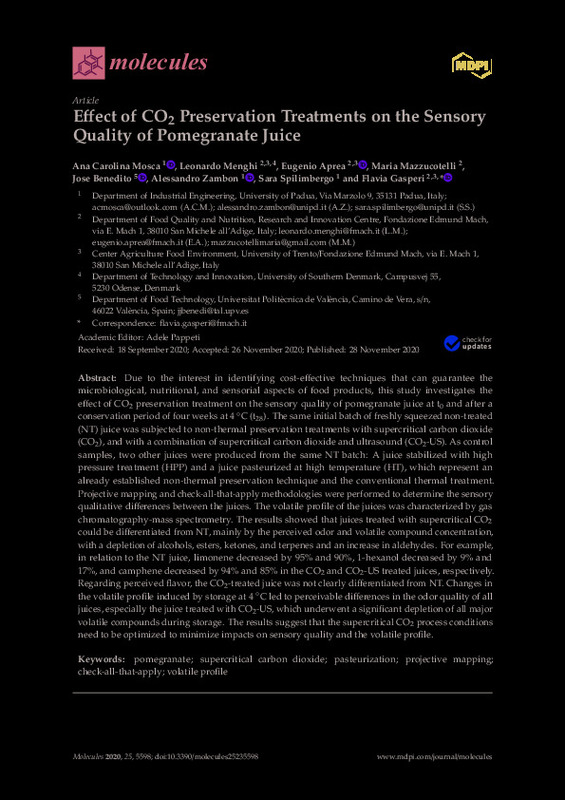JavaScript is disabled for your browser. Some features of this site may not work without it.
Buscar en RiuNet
Listar
Mi cuenta
Estadísticas
Ayuda RiuNet
Admin. UPV
Effect of CO2 Preservation Treatments on the Sensory Quality of Pomegranate Juice
Mostrar el registro completo del ítem
Mosca, AC.; Menghi, L.; Aprea, E.; Benedito Fort, JJ.; Mazzucotelli, M.; Zambon, A.; Spilimbergo, S.... (2020). Effect of CO2 Preservation Treatments on the Sensory Quality of Pomegranate Juice. Molecules. 25(23):1-26. https://doi.org/10.3390/molecules25235598
Por favor, use este identificador para citar o enlazar este ítem: http://hdl.handle.net/10251/192716
Ficheros en el ítem
Metadatos del ítem
| Título: | Effect of CO2 Preservation Treatments on the Sensory Quality of Pomegranate Juice | |
| Autor: | Mosca, Ana Carolina Menghi, Leonardo Aprea, Eugenio Mazzucotelli, Maria Zambon, Alessandro Spilimbergo, Sara Gasperi, Flavia | |
| Entidad UPV: |
|
|
| Fecha difusión: |
|
|
| Resumen: |
[EN] Due to the interest in identifying cost-effective techniques that can guarantee the microbiological, nutritional, and sensorial aspects of food products, this study investigates the effect of CO2 preservation treatment ...[+]
|
|
| Palabras clave: |
|
|
| Derechos de uso: | Reconocimiento (by) | |
| Fuente: |
|
|
| DOI: |
|
|
| Editorial: |
|
|
| Versión del editor: | https://doi.org/10.3390/molecules25235598 | |
| Código del Proyecto: |
|
|
| Agradecimientos: |
Sara Spilimbergo received funding from Regione Veneto through the European Social Fund and European Regional Development Fund (FSE) project "Pastorizzazione a bassa temperature di succo di frutta ad alto valore nutritivo" ...[+]
|
|
| Tipo: |
|









